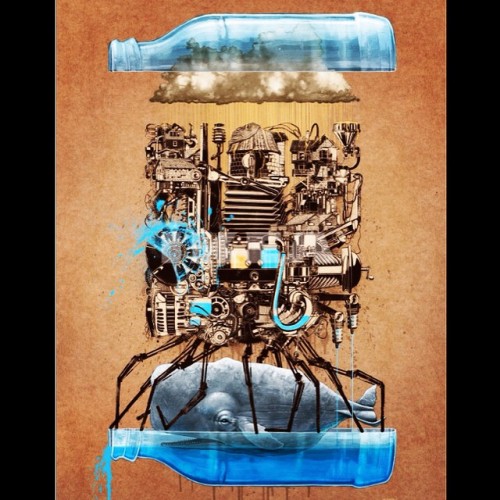The Amsterdam-based group Lifehunters recently played a prank that involved exhibiting a €10 print purchased from Ikea in the Museum Arnhem in an attempt to pass it off as a museum-quality art. They then asks an assortment of "art experts" are
asked to assess the piece, after carefully implying that they were going to be shown something special.
As you might guess, the so-called experts fell hook, line, and sinker. Of course, the print itself is actually pretty cool. It was created by a pair of Swiss street artists, Christian Rebecchi and Pablo Togni, who collaborate as NEVERCREW. (We've previously featured some of their work.) It's just not hobnobbing with champagne cool.
Personally, I think I'd take the print over most of the things I see hanging in the background of the video, but the point that Lifehunters is making is about how the value of art is entirely dependent on perception.
As you might guess, the so-called experts fell hook, line, and sinker. Of course, the print itself is actually pretty cool. It was created by a pair of Swiss street artists, Christian Rebecchi and Pablo Togni, who collaborate as NEVERCREW. (We've previously featured some of their work.) It's just not hobnobbing with champagne cool.
Personally, I think I'd take the print over most of the things I see hanging in the background of the video, but the point that Lifehunters is making is about how the value of art is entirely dependent on perception.

Source: NeverCrew
"These models, as such, from time to time actually contain more or less extensive realities, represented as autonomous systems of which the reality of the viewer becomes a part. This then the rapport becomes the very subject, mainly highlighted as the relationship between man and nature (between human being and its nature), but automatically extended to a vision of total and inevitable relationship between everything, between every part, where it is only the point of view, the position within a system, to define a selection.We call the theme “living structures” and we like to see them as models of living systems. We would like our art to generate interest and curiosity, and the viewer to become a part of the mechanism with his or her thoughts, perspective and emotions."
No comments:
Post a Comment